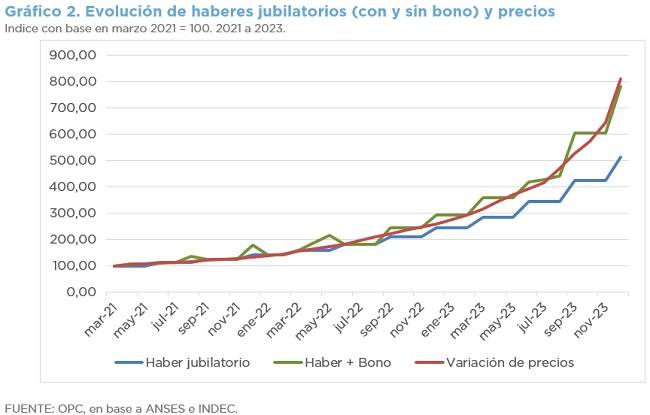Section 106 of the Bill suspends the mobility of quarterly adjustments for pension benefits and family allowances, subject to the evolution of salaries and ANSES (National Social Security Administration) resources and grants the Executive Branch the power to set the updates without defining a parameter to be used. This prevents a precise estimate of the fiscal impact but allows describing possible scenarios according to the criteria adopted by the Executive Power in the future.
- If there were no increase during the year, pensions would suffer a 69.9% deterioration in their purchasing power, and social security benefits would fall from 6 to 4.5% of the GDP. Half of the beneficiaries would be indigent and 33% of them would be in poverty.
- If there were adjustments only for the lowest income beneficiaries, the loss for those who receive three or more minimum pensions would be 69.9%. ANSES would have a surplus of 1.2% of GDP and social security benefits would represent 5% of GDP.
- If all pension benefits were increased in the same proportion according to the evolution of ANSES funds, the average loss would be 19%. If this strategy were to include a priority for those with lower incomes, the loss for the rest would rise to 40%.
- If all pension benefits were increased by inflation, there would be no loss of purchasing power and the ANSES deficit would rise to 0.8% of GDP.
- From the application of the current adjustment formula (2021) until December 2023, minimum pensions that received full bonuses suffered a loss of purchasing power of 3.6% and the rest of 36.5%.
- The decoupling between prices and pension benefits began in July 2022, when inflation accelerated.

